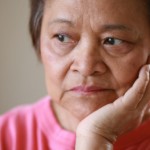
It has been estimates that 20% to 30% of the adult population will experience temporomandibular joint dysfunction. The aim of this study was to assess the short-term efficacy of two treatments for patients with permanently displaced discs and temporomandibular disorder (TMD) pain.
Adult patients( ≥ 18) with TMD pain and disk displacement without reduction (DDwoR) according to the Research Diagnostic Criteria (RDC)/TMD and with magnetic resonance imaging (MRI) confirmation were included. They were randomised to receive either local anaesthetic (group A) or local anaesthetic and lavage (group B). One examiner, blinded to patient treatment, evaluated the patients at baseline and 1 and 3 months after intervention.
The main outcome was pain relief during jaw movement of at least 30% on the VAS. Other outcomes were; characteristic pain index (CPI), short-form jaw functional limitation scale (SF-JFLS), graded chronic pain scale (GCPS), and analgesic consumption during the week before baseline and before each follow-up. In addition, depression was assessed using the 20 SCL-90R items that contribute to distress and global improvement on a 0–6-point scale (completely well, much better, somewhat better, unchanged, somewhat worse, and much worse) and treatment beliefs (credibility) were assessed on a VAS
- 45 patients were randomised (group a=25, group B= 20). There were 2 drop outs from group A and 6 from group B.
- There was no significant difference in TMD pain reduction ≥30% during movement between the groups at 1 or three months follow-up
- At 1 month 14 of 25 (56%) patients in group A and 8 of 20 (40%) patients in group B had TMD pain reduction ≥30% with 19 of 25 (76%) and 11 of 20 (55%) at 3 months respectively.
- At the 3 month follow-up, self-reported global improvement (somewhat better, much better, or completely well) was not significantly different at 74% in group A 62% in group B.
The authors concluded
..use of lavage to treat patients with permanently displaced TMJ discs and pain on jaw movements can be questioned. The authors found no significant differences between extra-articular local anesthetics and extra-articular local anesthetics combined with lavage in a 3 month follow-up of pain relief using ≥30% pain reduction as the primary outcome measure defining success. Similar trends were observed for outcome measures defining success.
Comment
A 2009 Cochrane review by Guo et al looked at arthrocentesis and lavage for TMD. They only identified two small trials (81 patients in total) at unclear to high risk of bias that could be included and they concluded that:-
There is insufficient, consistent evidence to either support or refute the use of arthrocentesis and lavage for treating patients with temporomandibular joint disorders. Further high quality RCTs of arthrocentesis need to be conducted before firm conclusions with regard to its effectiveness can be drawn.
This new study was powered to detect a mean ±SD difference of 3.3±3.6 in pain intensity between the groups; the calculated group size being 13. There was a 30% drop out in the group that underwent lavage leaving just 14 and the sample size may not have been sufficient to detect differences in the wide range of secondary outcomes measured.
A Cochrane review ( Rigon et al 2011) has also looked at arthroscopy for the treatment of TMD.
Links
Sahlström LE, et al. Lavage treatment of painful jaw movements at disc displacement without reduction. A randomized controlled trial in a short clinical perspective. Int J Oral Maxillofac Surg (2012) Article in press.
Guo C, Shi Z, Revington P. Arthrocentesis and lavage for treating temporomandibular joint disorders. Cochrane Database Syst Rev. 2009 Oct 7;(4):CD004973. Review. PubMed PMID:
Rigon M, Pereira LM, Bortoluzzi MC, Loguercio AD, Ramos AL, Cardoso JR. Arthroscopy for temporomandibular disorders. Cochrane Database Syst Rev. 2011 May 11;5:CD006385. Review. PubMed PMID: 21563153.
